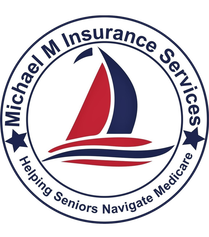Medicare Part D is Prescription Medication Coverage offered by Private Insurance companies.
Medicare is a Federal Health Insurance program that provides Hospital and Medical Coverage to seniors over the age of 65 or individuals under 65 that are on disability Medicare. While Medicare offers many benefits, it does not cover Prescription Drugs or Medications that are not administered in a Hospital, Doctor’s Office or Facility. That’s why Medicare Part D is an essential aspect of Medicare coverage that you need to understand. In this guide, we’ll take a closer look at Medicare Part D and break it down into easy-to-understand terms so you can make the best decisions about your medications and healthcare.
Medicare Part D Terms
Tier Level
Medications fall under different Tier levels, depending on their costs and availability. The five-tier classification system comprises Tier 1 Generic, Tier 2 Preferred Generic, Tier 3 Preferred Brand, Tier 4 Non-Preferred Brand, and Tier 5 Specialty. Preferred generics are usually the cheapest and widely available, while specialty drugs are the most expensive and only used for rare health conditions.
Deductible
Most Medicare Part D plans feature a deductible. Typically, the deductible only applies to higher tier drugs, usually Tier 3 and above, but not generics. This means that if you’re on a brand or specialty drug, you’ll have to pay for the plan deductible before the plan begins to pay the medications cost.
CopayCoinsurance
Under Medicare Part D, you’ll be expected to pay some out-of-pocket costs such as copay or coinsurance. A copay is a fixed amount you pay, while coinsurance is a percentage of the total cost. Copays are often lower with Tier 1 or 2 Drugs and higher with Tiers 3, 4 or 5 drugs. Coinsurance percentage might increase in the coverage gap.
Coverage Gap – “The Donut Hole”
After the initial coverage phase, after you and the Medicare Part D plan have reached a certain amount in spending($5030.00), you will go into the coverage gap, also known as the “Donut Hole.” In this phase, the plan pays a limited amount, and you are responsible for paying a higher share of the drug’s cost. Once a higher level($8000.00) is reached, the Medicare Beneficiary will reach the catastrophic phase and the medication cost will be greatly reduced.
The 4 Stages of Coverage
Medicare Part D has distinct coverage stages that include Deductible, Initial Coverage, Coverage Gap, and Catastrophic Coverage. The Deductible phase requires you to pay out of pocket for a specific amount before your plan kicks in and shares some costs. The Initial Coverage stage follows the Deductible phase and provides coverage at a flat Copay or Coinsurance rate. During the Gap stage, you share the cost of medications will be higher with the plan until you and the insurer reach a specific combined amount. After this stage, you move to the Catastrophic phase, where you pay minimal out-of-pocket costs for the rest of the year.
Medicare Part D Covered Medications-
Injectable Medications received in a Facility or a Hospital like Chemo, dialysis and many vaccines are covered under Medicare Part B.
Help Paying For Expensive Medications-
There are assistance programs to help lower the cost of expensive Medications. They are Income tested. They include Medicaid, which is offered by your State and some States like New York offer a program like E.P.I.C. which stands for Elderly Pharmaceutical Insurance Coverage giving seniors assistance that don’t qualify for their State Medicaid program. Also, there is L.I.S. which stands for Low Income Subsidy and is a Federal Program offered through Social Security.
Penalties-
If you do not enroll in a Part D Rx Plan when first eligible and have no creditable coverage and go more then 63 days without one then you will receive a penalty when you eventually enroll. The penalty is calculated by taking1% of the base premium ($32.74 in 2023) times the number of months you were without coverage.
Conclusion:
Understanding Medicare Part D is essential to help you make informed decisions about your medications and healthcare needs. Choosing the right plan for your needs can save you hundreds or thousands of dollars and ensure that you get the healthcare coverage that you deserve. By identifying your medication needs and researching different plan options available, you can enjoy peace of mind knowing that your prescription needs are taken care of. Reach out to your Medicare Advisor to review your Part D options.
Frequently Asked Questions
Do I Automatically Get a Drug Plan When I enroll in Medicare?
Are All Part D Drug Plans The Same?
I Don't Take Medications, Do I Still Have to Have a Drug Plan?
My Medications Are Expensive, Can I Get Help Paying For Them?
Can I Change My Part D Drug Plan At Anytime During The Year?
Mike Miligi- Owner

